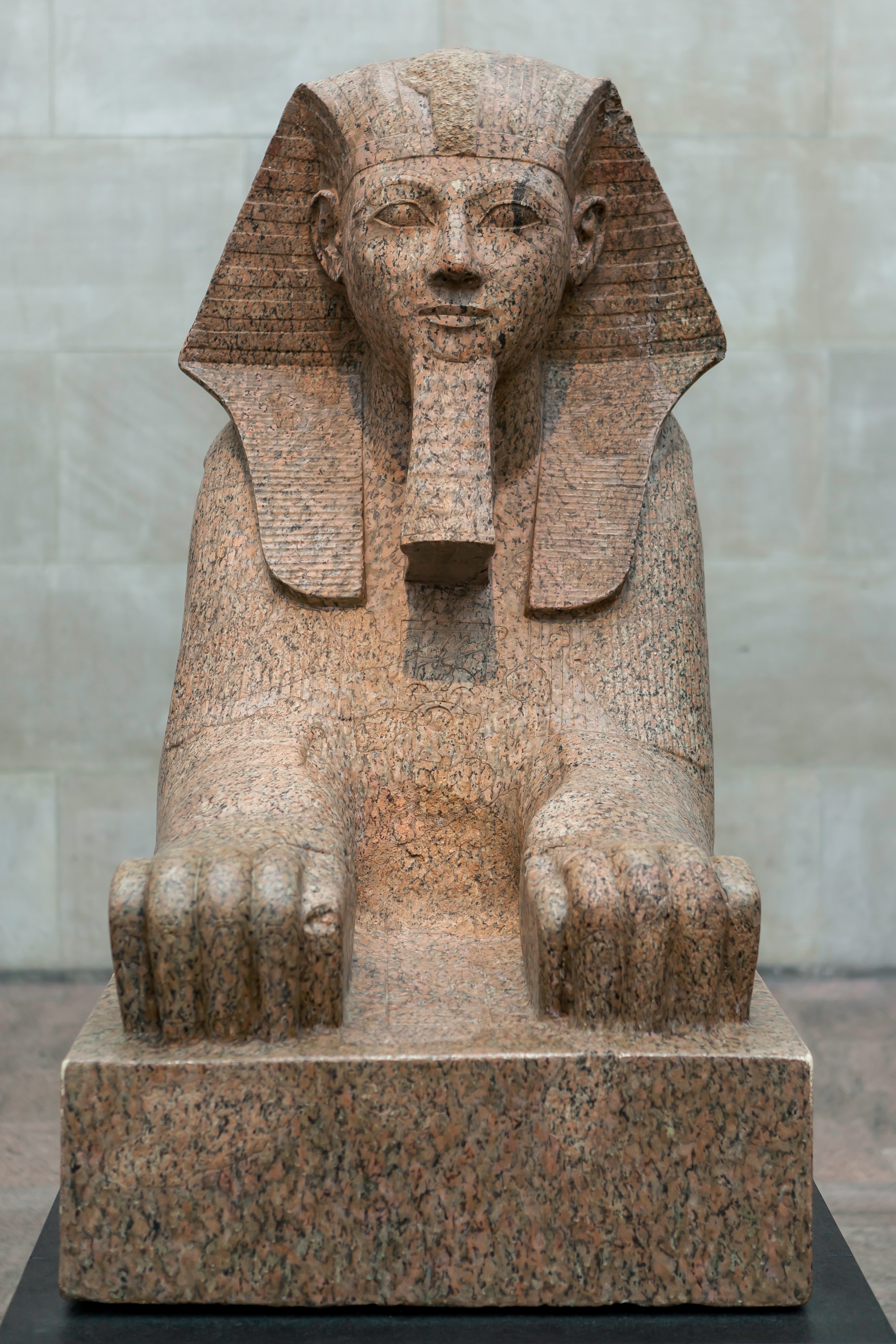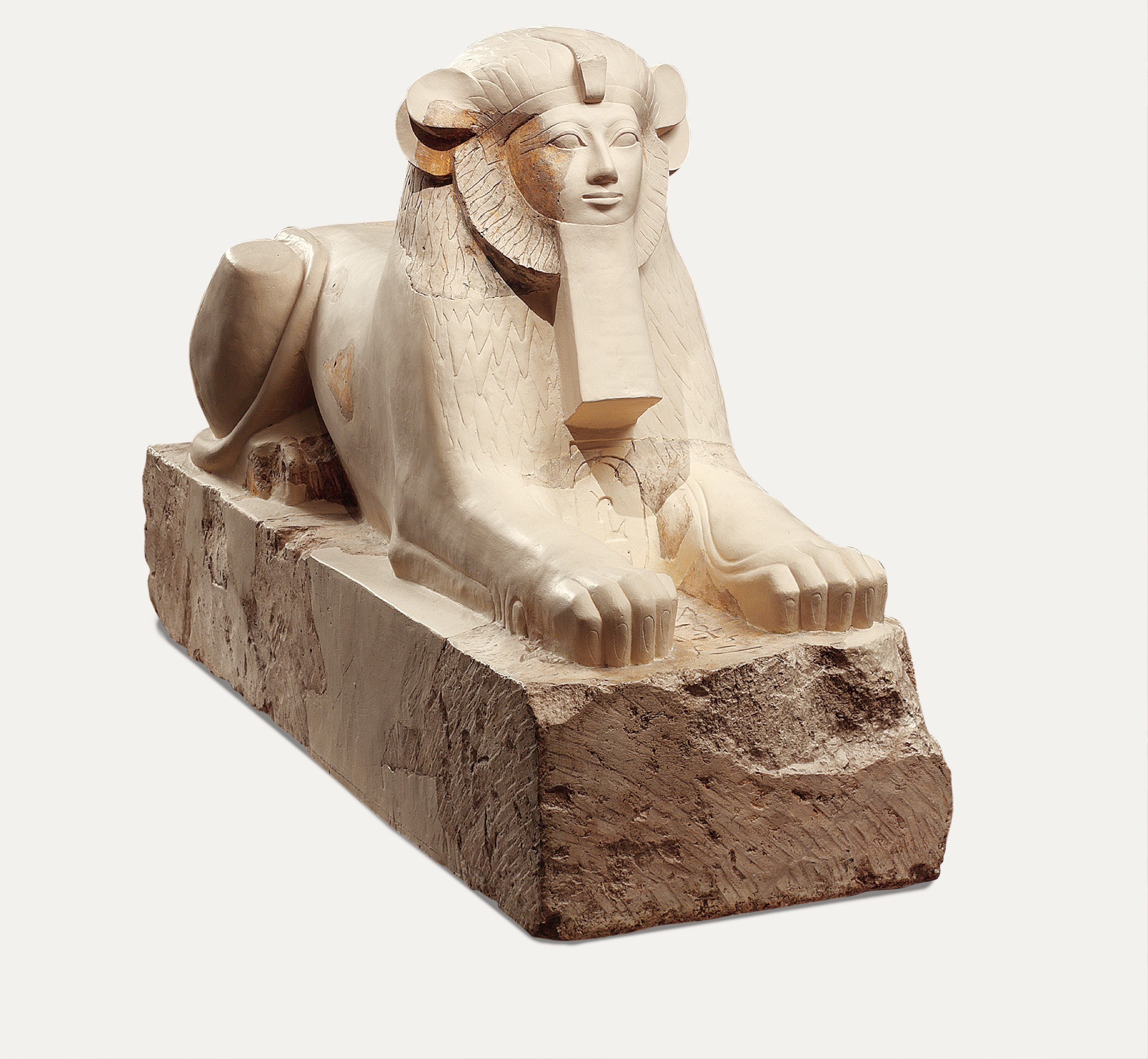This item is a sphynx of Pharaoh Hatshepsut with a human head and lions body. The sculpture of the Sphinx of Hatshepsut depicts.

Sphinx Of Hatshepsut New Kingdom The Metropolitan Museum Of Art
Depicts the afterlife e.
. The sculpture of the Sphinx of Hatshepsut depicts. Sculpture depicts her as a sphinx. Around the 18th dynasty in Deir el-Bahri Upper Egypt.
The sculpture of the sphinx of hatshepsut depicts. She is considered to be one of Egypts most successful rulers. Carved from seven tons of red granite it is conventionally interpreted as representing the queen herself as a lion-bodied creature with androgynous.
Sphinx of Hatshepsut First association with the Egyptian culture for me is related to Sphinx. The sculpture of the Sphinx of Hatshepsut depicts. This sculpture was part of a sphinx which was lost many years ago.
A female depicted as a male king. Written By viveiros Monday March 14 2022 Add Comment Edit The archetypal Egyptian sphinx usually had the body of a lion and the head of a man usually the king although examples 29. It would have earned its patron a special role in Egyptian and architectural histo-ry whether built by a female or male.
14791458 BC is a sculpture of Pharaoh Hatshepsut as a sphinx made of granite that is attached to a rectangular base on the bottom. Hatshepsut chose to be represented as a male Pharaoh despite her gender. In contrast women have tended to.
The Great Sphinx of Giza is a giant 4500-year-old limestone statue situated near the Great Pyramid in Giza Egypt. A male pharaoh depicted as a woman. The sphinx in question dates from the Egyptian New Kingdom and specifically from the reign of Queen Hatshepsut 1479-58 BC who likely commissioned it to guard the route to her funerary temple.
Thats why first what caught my eyes was Sphinx of Hatshepsut. She made sure not to be mistaken for anything but a legitimate pharaoh. She has the body and mane of a lion with the head of a human.
The sculpture of the Sphinx of Hatshepsut depicts. This larger than life size sculpture of a reclining female figure is carved from Hornton stone a Jurassic limestone quarried in Oxfordshire. A female dedicated as a male king There are no artworks that consciously counter stereotypical representations by showing men as vulnerable and women as powerful.
The sculpture of the Sphinx of Hatshepsut depicts. Artworks depicting men have historically referred to their powerful bodies or depicted them in leadership roles. Spike Lees movie Do the Right Thing focuses on.
This graceful life-size statue depicts Hatshepsut in female attire but she wears the nemes headcloth a royal attribute usually reserved for the reigning king. This monument depicts the Akkadian victory over the Lullubi Mountain people. Sphinx of Hatshepsut from ca.
This colossal sized head and shoulder bust depicts Hatshepsut the female pharoah who came to the throne of Egypt in 1478BC and reigned for about 20 years. Another seated statue from. Sphinx Of Hatshepsut Illustration World History Encyclopedia This statue of Senenmutan important official during the joint reign of Queen Hatshepsut and King Thutmose IIIappears in the classic kneeling pose known since the Fourth Dynasty circa 26252500 BCE.
A female depicted as a make king. In this sculpture the pharaoh Hatshepsut the first important female ruler known to history is shown as a sphinx a guardian figure with a human head and a lions body. In the 12th century BCE a thousand years after it was originally made the Elamite king Shutruk-Nahhunte attacked Babylon and according to his later inscription the stele was taken to Susa.
Measuring 240 feet 73 meters long and 66. Sphinx Of Hatshepsut Illustration World History Encyclopedia. No of course it is not that massive Great Sphinx in Giza Egypt but his history is also interesting.
This colossal sphinx portrays the female pharaoh Hatshepsut with the body of a lion and a human head wearing a nemes headcloth and false beard. A female depicted as a male king. The sculpture of the Sphinx of Hatshepsut depicts.
This limestone and plaster piece depicts the female pharaoh Maatkare Hatshepsut as a sphinx. She wears the same ceremonial costume as male pharaohs including a false beard and a striped royal headcloth that was originally painted blue and yellow and featured a symbolic protective cobra known as the. What the artists looked like and experienced on a personal level.
A female depicted as a male king. The face of the Sphinx is the idealized face of a male Pharaoh showing the stylized ceremonial beard and the striped head cloth worn by the Pharaohs which in this case represents serenity. This is expressed as well in Hatshepsuts funerary tem-ple her greatest visible legacy.
This odd combination is evident in a red granite piece on display in the Metropolitan Museum of Art in New York. The sculpture of the Sphinx of Hatshepsut depicts. The sculpture of the Sphinx of Hatshepsut depicts.
It was originally made for Hatshepsuts funerary temple at Deir el-Bahri which is a complex of temples dedicated to pharaohs of her family. This colossal sized head and shoulder bust depicts Hatshepsut the female pharoah who came to the throne of Egypt in 1478BC and reigned for about 20 years. This was a way of showing her power and dominion.
A female depicted as a male king. It depicts a seated Hatshepsut in female clothing wearing the nemes crown and is inscribed with her pharaonic throne name Maatkare Truth is the Soul of the Sun and feminized versions of her kingly titles Daughter of Re etc. King Tut disguised as Nefertiti.

Sphinx Of Hatshepsut Illustration World History Encyclopedia

Sphinx Of Hatshepsut Illustration World History Encyclopedia
Sphinx Of Hatshepsut New Kingdom The Metropolitan Museum Of Art

File Sphinx Of Hatshepsut Met 31 3 166 F White Jpg Wikimedia Commons

Sphinx Of Hatshepsut New Kingdom The Metropolitan Museum Of Art

Sphinx Of Hatshepsut New Kingdom The Metropolitan Museum Of Art

Sphinx Of Hatshepsut New Kingdom The Metropolitan Museum Of Art
Sphinx Of Hatshepsut New Kingdom The Metropolitan Museum Of Art
0 comments
Post a Comment